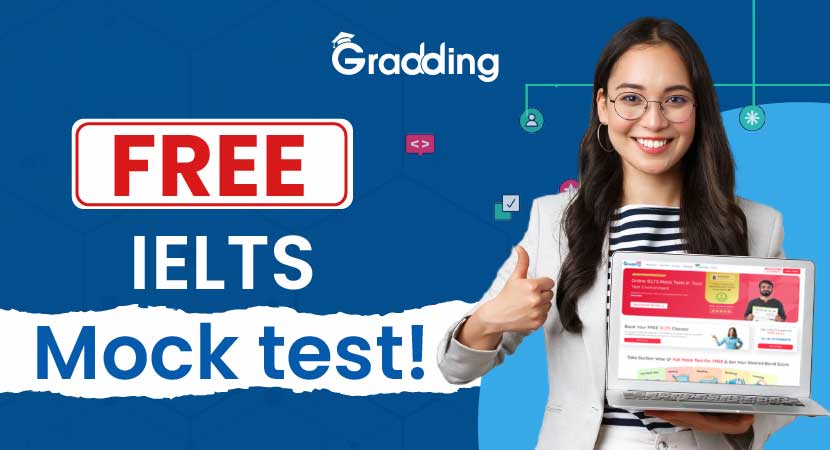The IELTS reading section assesses your capability to comprehend complex paragraphs. However, it consists of three passages of increasing difficulty, drawn from authentic sources. For example: journals, textbooks, and newspapers. In addition, you have to complete 40 questions within 60 minutes. Moreover, that tests various reading skills, including understanding main ideas, locating specific data, and more. In short, excel in this part of the exam is difficult, so take the IELTS free practice test. As it will help you to familiarize yourself with the exam format, syllabus, and question type.
Further, take a look below to understand the pattern of the exam.
What is the IELTS Reading Format?
The 40 questions on the IELTS reading test assess a variety of reading skills. These include:
- Skimming: Reading the text quickly to understand the general meaning. When skimming, you do not read each word or study the sentence in detail. You are just getting the gist of what is the topic about.
- Scanning: Reading the sentence fast to find specific information. For the reading section, this will be the details that you need while answering the question. Scanning probably will not give the actual solution but it will help you locate where the answer is located.
- Reading for Details: The last of reading skills is detailed reading and this is what gives you the solution to the question.
This is the format of the exam and the detailed information of ability you must have while taking this section. Now, look below to know the time duration to finish this part of the exam.
Time Limit of the Section
You will have 60 minutes to complete 40 questions, so managing your time is important. There are three sections in the IELTS reading test. So, you should aim to spend no more than 20 minutes on each task. As the test progresses, it increases the difficulty level. Thus, make sure you allow yourself enough time to complete each of the work. However, you may find that you can get through the first section more quickly. It will give you more time to spend on the more challenging questions in the next two sections.
Understand the time limit for the reading section. Now, read below to learn how it differs in both IELTS types.
How Reading Sections Differ in Both the IELTS Types
To make your practice effective take a closer look at the IELTS reading practice test with answers. So, you can get a better idea of the questions you might face on the test by skimming through the syllabus of both IELTS types.
IELTS General Training Reading
There are three tasks and 40 questions in the General Training reading test. It focuses on scenarios that you may see in your daily or professional life. For example: general topics of interest and applying for jobs. All the paragraphs used in this type of IELTS are taken from books, magazines, newspapers, ads and more. Moreover, take a look below to understand that task-wise:
- Task 1: looks at your social skills and will include a few short texts that are relevant to daily life in an English-speaking country. These can be timetables, advertisements or notices.
- Task 2: Take a closer look at your workplace survival skills. The text used here is taken from contracts, staff development and training manuals, job descriptions and others.
- Task 3: Contains a lengthy and more complicated text on a topic of general interest. This sentence could be taken from a book, magazine or newspaper.
However, by IELTS reading the syllabus for this section you may feel nervous, but do not worry you can practice with the IELTS free practice test. It will help you to build up your confidence level.
IELTS Academic Reading
The IELTS Academic reading checks a variety of reading skills. It includes your ability to follow an argument and identify the opinion, attitude or intent of a writer. It assesses your ability to understand ideas, details, opinions and implicit meanings when reading. Moreover, skimming, scanning and detailed reading are all included in the evaluation of your reading comprehension skills.
Furthermore, it contains three tasks and each of them has long text taken from current books, journals and newspapers. Thus, these are based on the issues you would face in an educational or professional context in an English-speaking setting.
In addition, it consists of 40 questions that must be solved. Moreover, to know about them take a look below.
Type of Questions
In both IELTS test reading sections, you can expect a range of question types, including:
- Identifying information
- MCQs
- Identifying a writer’s claims
- Matching headings, information, features
- Sentence completion
- Summary, note, table, flow-chart completion
- Diagram label completion
- Short-answer question
Thus, you will need to manage your time to make sure you can respond to a variety of question types in the given 60 minutes. Moreover, it needs practice so you should take the IELTS free practice test regularly.
Conclusion
Summing up, the reading section of IELTS assesses your ability to comprehend complex texts. The test consists of three passages, each increasing in difficulty level. So, you have prepare well using the IELTS reading practice test with answers. This will help you to boost your skimming and scanning skills.



